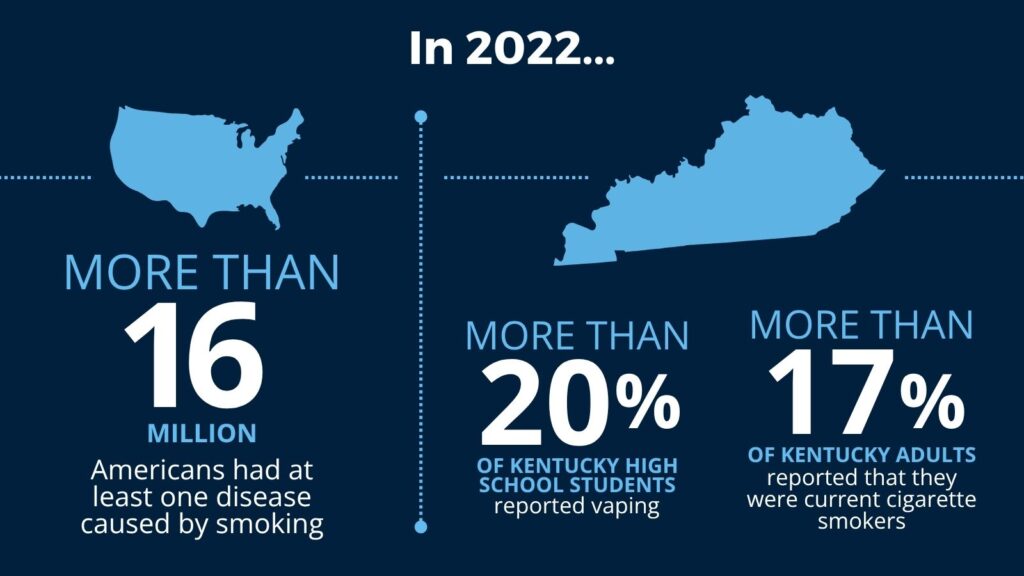August’s Our Healthy Kentucky Home campaign focuses on preventing and treating tobacco use

By Melissa Patrick
Kentucky Health News
The focus of August’s “Our Healthy Kentucky Home” initiative is preventing and treating tobacco use, including smoking, vaping, using dip and other tobacco products.
Health Secretary Steven Stack said at a press conference that in 2022, more than 17% of Kentucky adults reported that they smoke cigarettes, and more than 20% of Kentucky high school students reported using e-cigarettes at least once in the 30 days preceding the survey.
Further, he said, “Cigarette smoking is the number one preventable cause of death, disease and disability in our nation; it is also the number one preventable cause of cancer. Electronic cigarettes, sometimes called e-cigarettes or vapes, are also risky.”
“Both smoking and vaping can increase your risk of heart disease, cancer, diabetes and strokes,” he said. “Unfortunately, once you become addicted to nicotine, it is hard to quit, but by incorporating modest changes in your daily routine, you can begin your journey to a healthier, tobacco-free you.”
Stack said one of the best things a person can do to quit smoking is to seek support from someone specializing in helping people quit, noting that people who seek support are twice as likely to be successful in quitting, compared to people who try to stop cold turkey without help.
Stack encouraged Kentuckians to reach out to Quit Now Kentucky, which provides 24/7 no-cost coaching over the phone and online to anyone who wants to quit using tobacco. The quit line can be reached at 1-800-QUIT-NOW (784-8669); through text QUITKY to 797979; or online at www.quitnowkentucky.org. The services are free and confidential.
Kentucky also offers additional support to youth who want to quit vaping or using other tobacco products through the MyLife MyQuit program, available to anyone under the age of 18. This program is also free and confidential. MyLife My Quit can be reached by texting Start My Quit to 236072 or visiting www.mylifemyquit.com.
Another tool for quitting tobacco is nicotine replacement therapy, such as nicotine patches, gum or lozenges.
“In Kentucky, almost all health insurance plans, including Medicaid, cover nicotine replacement therapy with no co-pay,” Stack said. “If you don’t have health insurance or you’re enrolled in Medicare, you may be able to get no-cost nicotine replacement therapy through the Quit Now Kentucky line.”
He also offered some tips to address tobacco nicotine cravings, such as snacking on crunchy snacks, drinking a large glass of water when you get a craving or eating smaller meals throughout the day.
“It’s important to distract yourself, since nicotine cravings typically pass within five minutes,” he said.
The Our Healthy Kentucky Home website includes links to several smoking/vaping prevention and cessation resources.
The key goals of the state’s year-long campaign are for Kentuckians to eat two servings of fruits and vegetables daily, to exercise at least 30 minutes three times per week, and to engage with others and stay connected.